*NURSING > EXAM REVIEW > Chapter 33: Forensic Nursing Halter: Varcarolis’ Foundations of Psychiatric Mental Health Nursing: (All)
Chapter 33: Forensic Nursing Halter: Varcarolis’ Foundations of Psychiatric Mental Health Nursing: A Clinical Approach, 8th Edition(A+ Graded)
Document Content and Description Below
1. A person diagnosed with bipolar disorder ran out of money, did not refill a lithium prescription, and then relapsed. After assaulting several people in the community, this person was convicted an... d sentenced. Prior to parole, which outcome has priority for the correctional nurse to achieve? The person a. agrees in writing to continue lithium therapy. b. is reestablished on an appropriate dose of lithium. c. lists community resources for prescription assistance. d. agrees to a follow-up appointment in an outpatient clinic. ANS: C To increase medication adherence, reduce the risk of relapse, and prevent further criminal activity due to mental illness, the person‘s awareness of community resources for medication refills and medication-related services is the most important outcome. Agreeing to take lithium, being reestablished on medication in the jail, and agreeing to follow-up mental health care are important, but none of these will address the primary reason for the criminal behavior: the relapse caused by inability to access medication in the community. PTS: 1 DIF: Cognitive Level: Analyze (Analysis) REF: Page 33-21 TOP: Nursing Process: Outcomes Identification MSC: Client Needs: Health Promotion and Maintenance 2. An inmate was diagnosed with posttraumatic stress disorder (PTSD) caused by severe sexual abuse. One day this inmate sees a person with characteristics similar to the perpetrator, has a flashback, and then attacks the person. Correctional officers place the inmate in restraint. The correctional nurse should anticipate that the inmate would react to restraint by a. committing to counseling to reduce the incidence of flashbacks. b. becoming less likely to assault others during future flashbacks. c. gradually calming and returning from the flashback to reality. d. becoming more frightened, agitated, and combative. ANS: D The correctional nurse recognizes that events occurring in the present reality are likely to be incorporated into a flashback, leading the inmate to become more frightened and desperate to escape. Even if no longer experiencing a flashback, persons will likely re-experience their original trauma if restrained, including the emotions experienced during that trauma, leading to increased fearfulness and resistance to the jail restraints. Restraints are not likely to calm the individual or reduce aggressiveness but instead increase the sense of helplessness and desperation. testbanks_and_xanax PTS: 1 DIF: Cognitive Level: Apply (Application) REF: Pages 33-19, 21, 22 (Vignette) TOP: Nursing Process: Planning MSC: Client Needs: Psychosocial Integrity 3. An inmate was diagnosed with PTSD caused by severe sexual abuse. One day this inmate sees a person with similar characteristics to the perpetrator, has a flashback, and then attacks the person. Correctional officers place the inmate in restraint. Which action by the correctional nurse is most appropriate? a. Plan to meet with the inmate for debriefing after release from the required period of restraint. b. Support use of restraints as needed to control violent outbursts and assure the safety of all inmates. c. Contact a supervisor authorized to make an exception to the restraint policy and explain why an alternate response is needed. d. Confront the correctional officers who initiated the restraint, explain the inappropriateness of this action, and request the inmate‘s release. ANS: C Nurses have advocacy responsibilities, regardless of the setting. The optimum outcome in this situation would be to minimize the duration of the restraint episode. The inmate and others are at risk of injury until the inmate is calm. The restraints will likely worsen and extend the inmate‘s distress and agitation. Supporting the use of restraints ignores the need of select inmates for alternate responses that do not paradoxically worsen the situation instead of help it. Meeting with the patient to calm her after her release would be the second most helpful response, but it does not shorten the duration of the patient‘s restraint. Confronting the officers is unlikely to be successful, since they are following proper procedures; accusing them of improper actions will likely increase defensiveness rather than expedite the inmate‘s release from restraint. PTS: 1 DIF: Cognitive Level: Apply (Application) REF: Pages 33-8, 19, 21, 22 (Vignette) TOP: Nursing Process: Implementation MSC: Client Needs: Psychosocial Integrity 4. As a nurse in the prison clinic changes the dressing on an inmate‘s wound, the inmate says, ―You know I never did anything, right? I am totally innocent any crime.‖ Select the nurse‘s best response. a. ―I hear that same comment from most of the inmates here.‖ b. ―Whether you are innocent or guilty is of no concern to me.‖ c. ―Your innocence or guilt is the Court‘s decision, not my decision.‖ d. ―I trust you to tell me the truth. I will document your comments in your medical record.‖ ANS: C It is not the role of the forensic nurse to make a decision as to guilt or innocence or whether a victim is being candid in reporting what happened not. The correct response asserts this information, along with where the responsibility lies. In this interaction, it is irrelevant what other inmates say. The nurse should be compassionate rather than dismissive. It is important testbanks_and_xanax to remember that in forensic nursing, the nurse–patient relationship occurs based on the possibility that a crime has been committed. PTS: 1 DIF: Cognitive Level: Apply (Application) REF: Pages 33-6, 9 (Box 32-1) TOP: Nursing Process: Implementation MSC: Client Needs: Safe, Effective Care Environment 5. A large group of inmates are in line up at the prison clinic window for medication administration. One inmate near the end of the line calls out to the nurse using slang terms about the nurse‘s sexuality. What is the nurse‘s best action? a. Call for a guard to place the offending inmate in seclusion. b. Ignore the comment and continue medication administration. c. Ask the other inmates, ―What do you think about those comments?‖ d. Postpone the current medication administration until later in the day. ANS: B It is important for the nurse to be mindful of characteristics of the incarcerated population and not react personally to the comments. The nurse is safe; therefore, it is unnecessary to respond to the comments. The nurse has an obligation to provide care, which includes medication administration. Exploring the thoughts of other inmates may precipitate further problems. Seclusion is a last resort. The offending inmate‘s comments do not justify use of seclusion. PTS: 1 DIF: Cognitive Level: Apply (Application) REF: Pages 33-6, 9, 21 TOP: Nursing Process: Implementation MSC: Client Needs: Safe, Effective Care Environment 6. A psychiatric clinical nurse specialist works with a defendant as a competency evaluator. A staff member asks, ―Why are you spending so much time with that defendant? You spend one-to-one time and write volumes. Usually, we give defendants some medication and return them to court.‖ Select the clinical nurse specialist‘s most appropriate response. a. ―My role is to be an advocate for the defendant, so I have to know him well and build a trusting relationship.‖ b. ―My focus is providing intensive psychotherapy to ensure the defendant becomes competent before returning to court.‖ c. ―The specialized assessments I make on behalf of the Court require very lengthy and detailed interviews, so it takes a lot of time.‖ d. ―I spend the time observing, assessing, and documenting competency, writing a report, and preparing expert testimony for the Court.‖ ANS: D The competency evaluator has to determine the patient‘s current competence to act on his own behalf during his trial; without competency, the inmate cannot stand trial. Determining competency goes well beyond the mental status, functional, and risk assessments most psychiatric nurses are accustomed to and are very complex and time-consuming. A complete formal report is prepared for the Court and all pertinent details addressed in anticipation of questioning by officers of the Court. The evaluator represents the Court, not the patient. testbanks_and_xanax Interviews of the inmate are only a portion of the evaluator‘s work. Evaluators help the Court determine competency but do not intervene to increase the patient‘s competency. PTS: 1 DIF: Cognitive Level: Apply (Application) REF: Pages 33-8, 9, 13, 31 (Box 33-2) TOP: Nursing Process: Implementation MSC: Client Needs: Safe, Effective Care Environment 7. During arraignment, a defendant behaves bizarrely, fails to respond to the judge‘s questions, and shouts obscenities. The judge orders an evaluation by a forensic nurse examiner. Which information provided by the examiner will be most important to the Court at this time? a. The defendant‘s mental state at the time of the crime b. The defendant‘s competence to proceed with trial c. The cause of the defendant‘s courtroom behavior d. The defendant‘s history and cognitive abilities ANS: B Competence to proceed refers to one‘s capacity to assist the attorney and understand legal proceedings. In the United States, no one is tried unless deemed competent. An incompetent individual is remanded to a locked facility for treatment to regain competency. The Court will desire a full assessment of the patient‘s present mental state related to his ability to assist in his own defense, but at this time, the Court is not interested in his state of mind at the time of the original crime nor his history. PTS: 1 DIF: Cognitive Level: Apply (Application) REF: Page 33-12 TOP: Nursing Process: Assessment MSC: Client Needs: Psychosocial Integrity 8. A psychiatric forensic nurse examiner was asked by a defendant‘s attorney to determine the defendant‘s legal sanity. What is the priority task of the nurse examiner? a. Determine if the defendant understands the charges and can assist the attorney with the defense. b. Complete a risk assessment to determine if the defendant is a danger to self or others. c. Reconstruct the defendant‘s mental state and motives at the time of the crime. d. Collect and compile evidence to determine whether a crime occurred. ANS: C Legal sanity is determined for the specific time of the alleged crime, so reconstructing the defendant‘s mental state, motivation, thinking, and other elements of functioning at the time of the alleged crime is essential to making the determination. The defendant‘s ability to understand the charges and assist in his defense is pertinent to an evaluation of competency. Unless the Court has specifically asked for a risk assessment (which would be unusual), the risk assessment is the responsibility of clinical staff caring for the patient, not the forensic nurse examiner. Police collect evidence about the crime, and the prosecutor compiles it. A forensic nurse examiner does not participate in evidence collection other than that related to the assessment of the patient‘s state of mind at the time of the alleged crime. [Show More]
Last updated: 1 year ago
Preview 1 out of 10 pages
.png)
Reviews( 0 )
Document information
Connected school, study & course
About the document
Uploaded On
May 04, 2021
Number of pages
10
Written in
Additional information
This document has been written for:
Uploaded
May 04, 2021
Downloads
0
Views
51
.png)

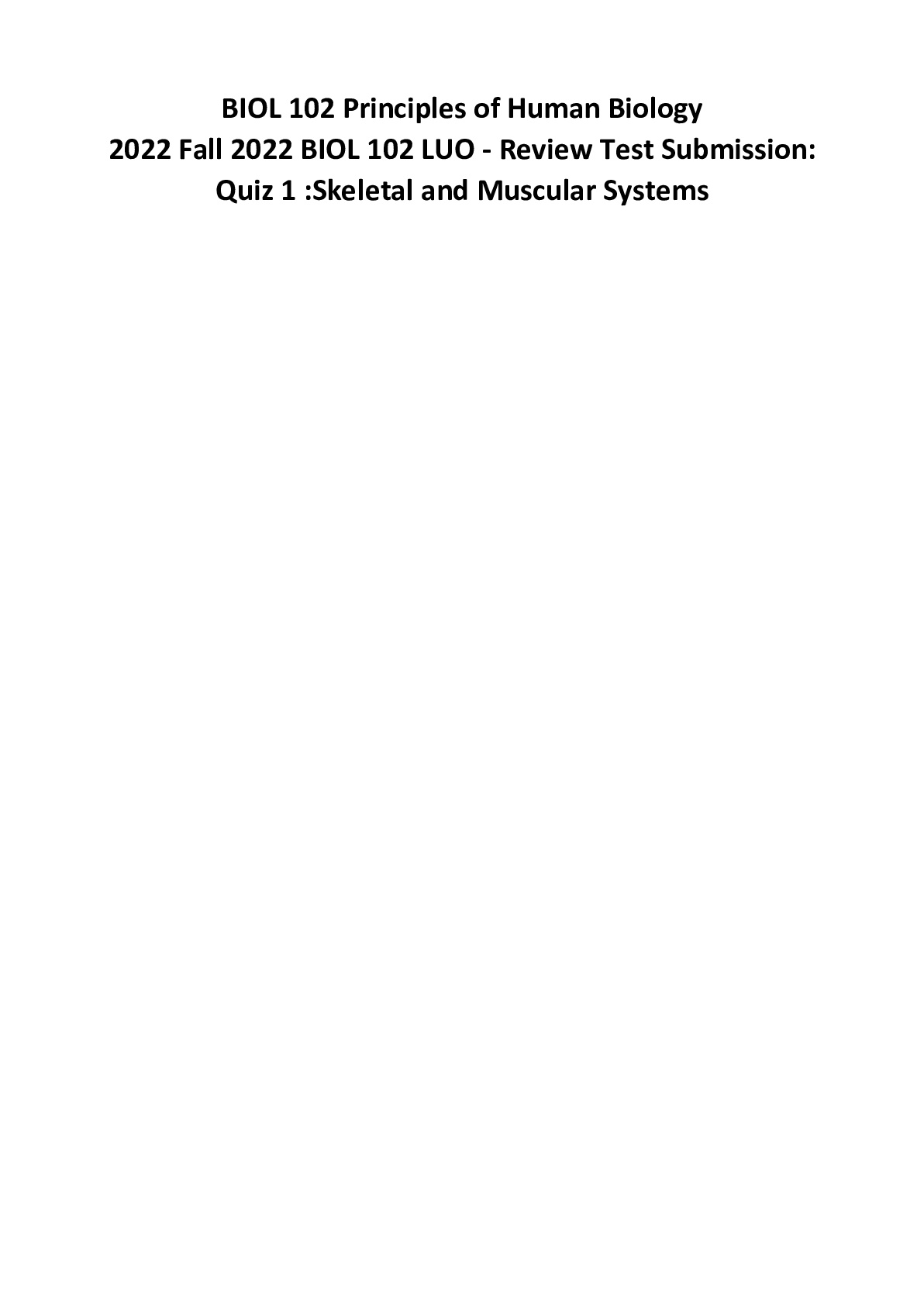

.png)

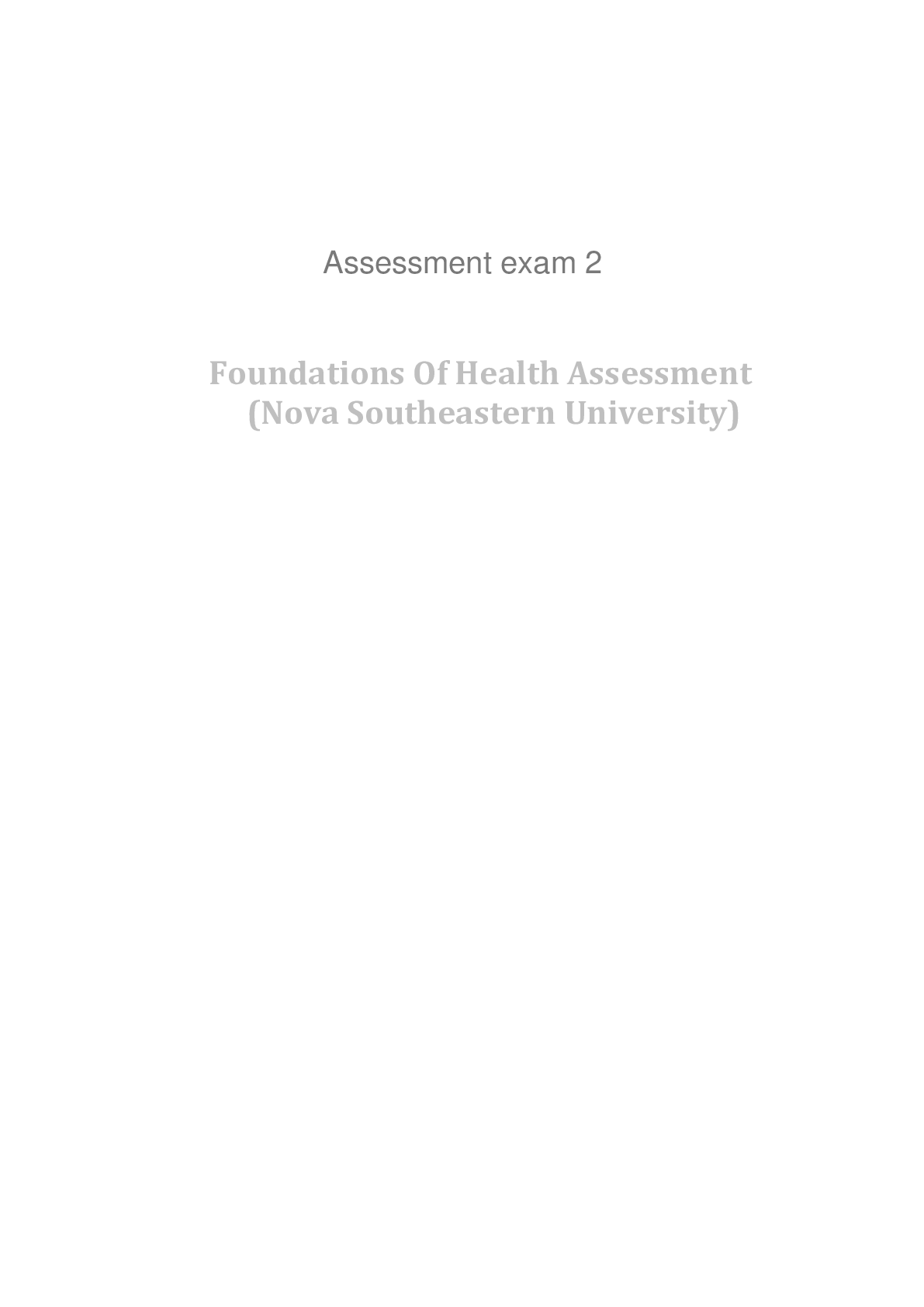
.png)
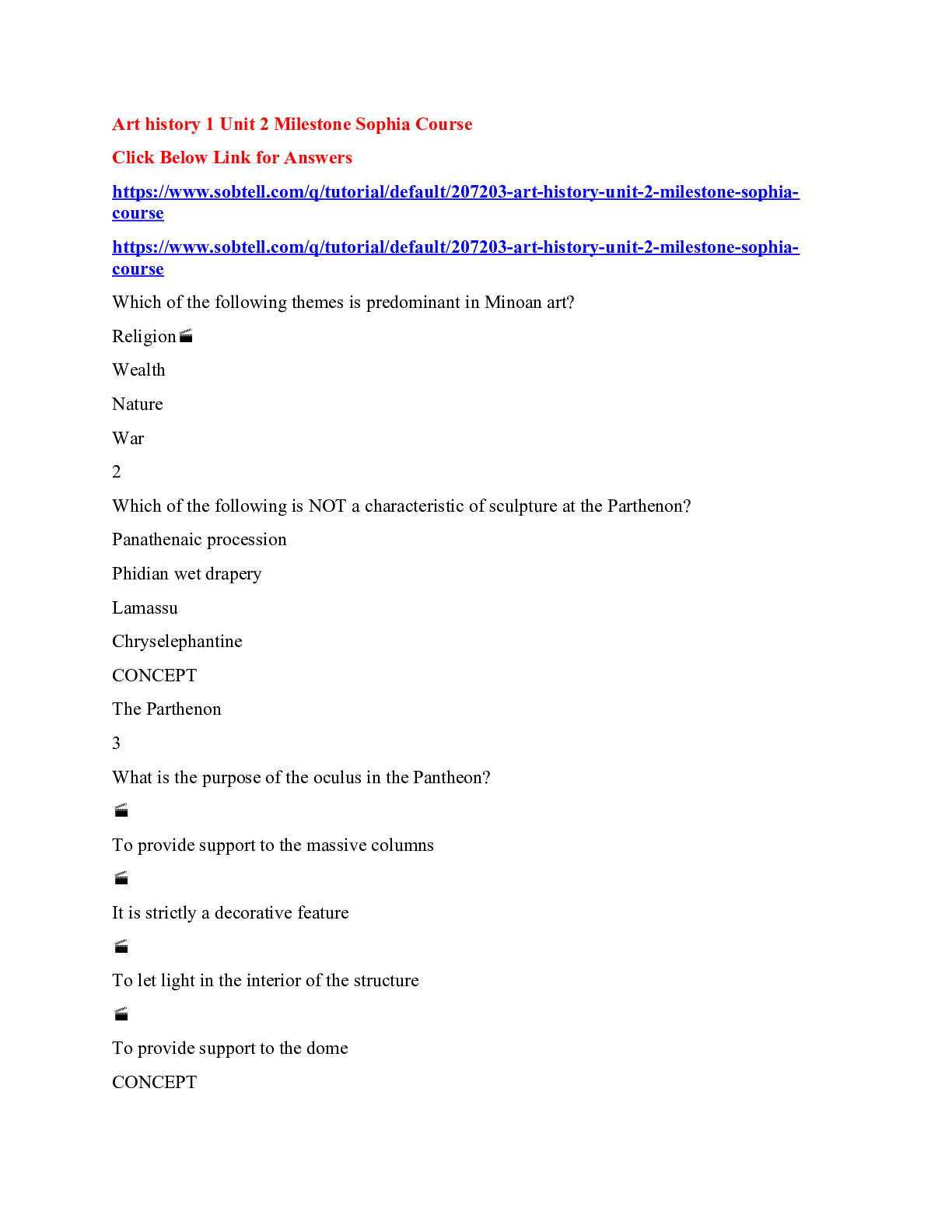




.png)
.png)


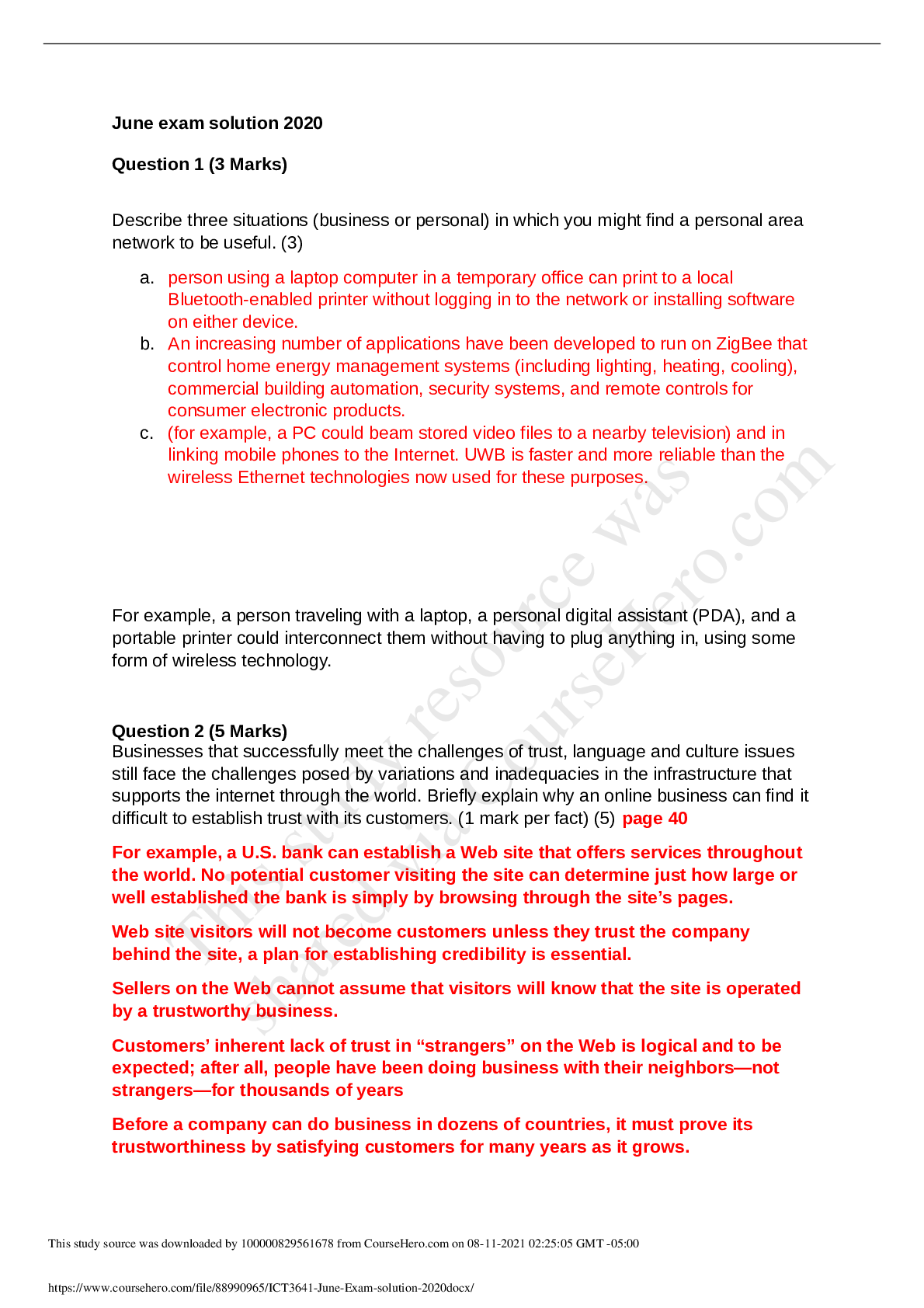




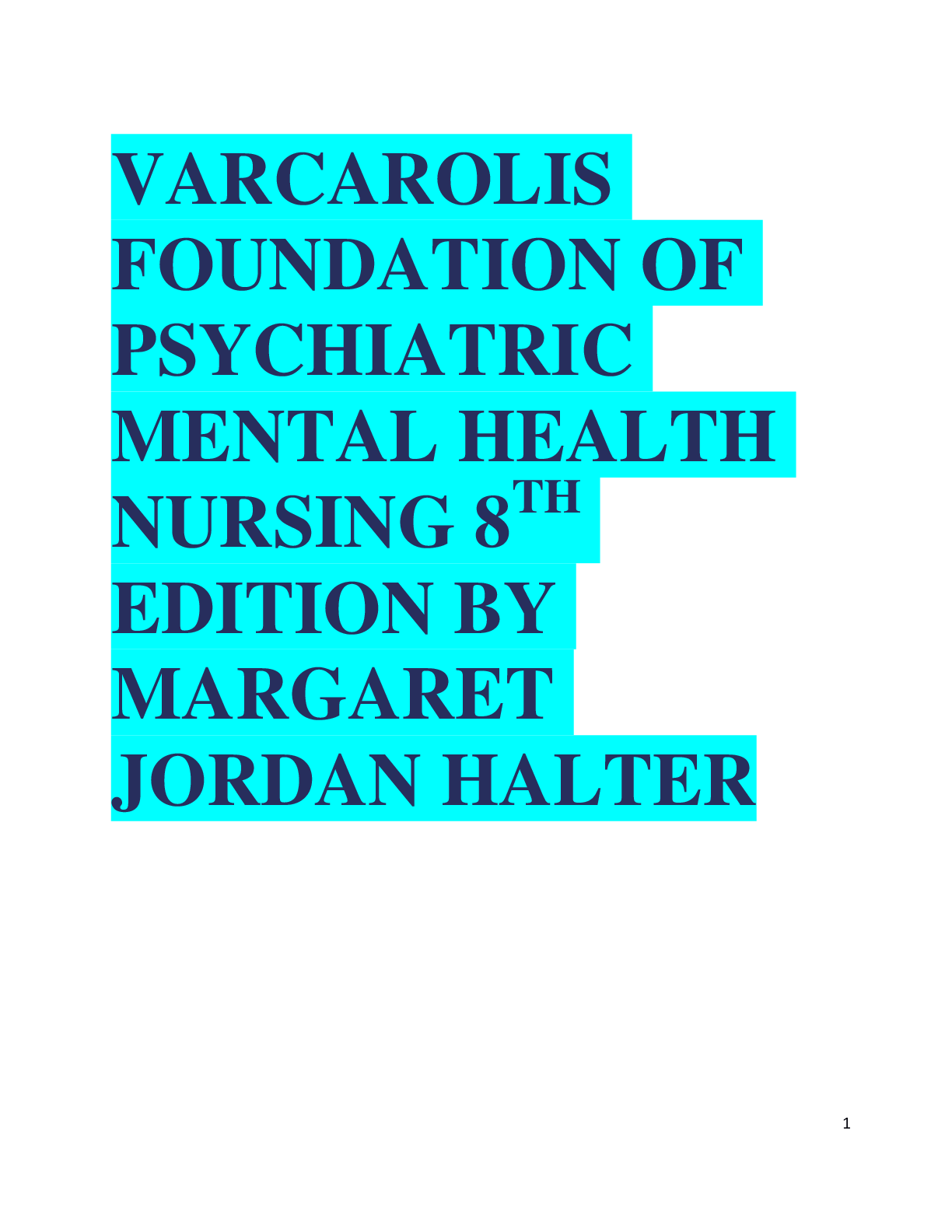

.png)
.png)
.png)
.png)
.png)
.png)
.png)
.png)
.png)
.png)
.png)
.png)

